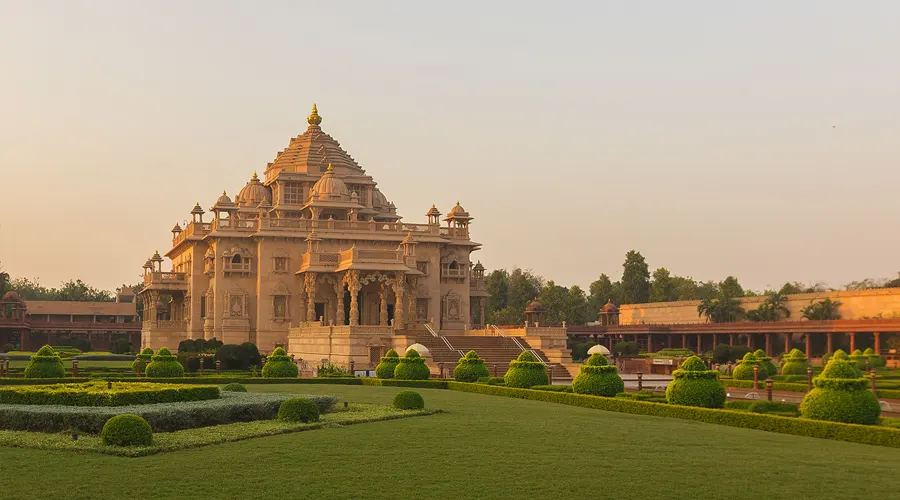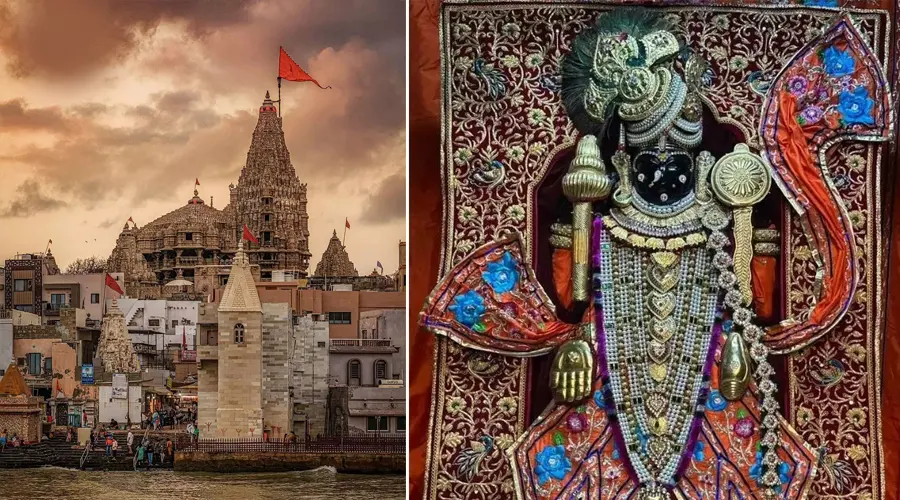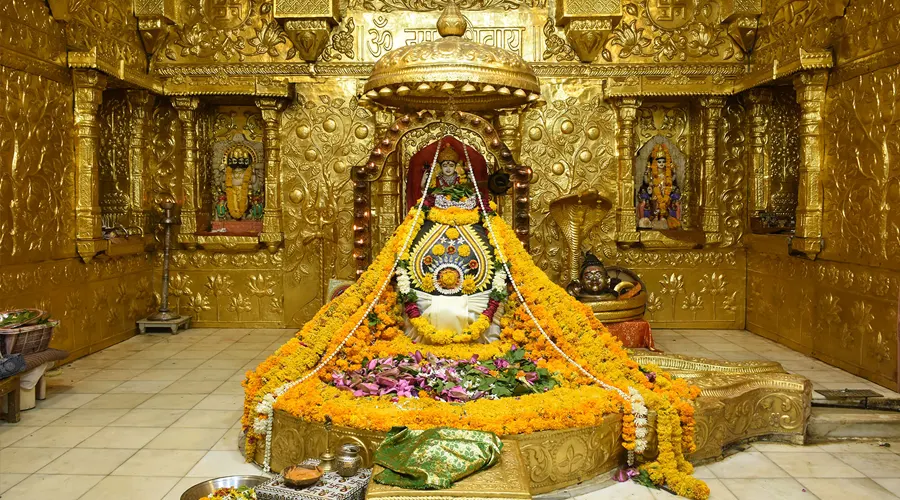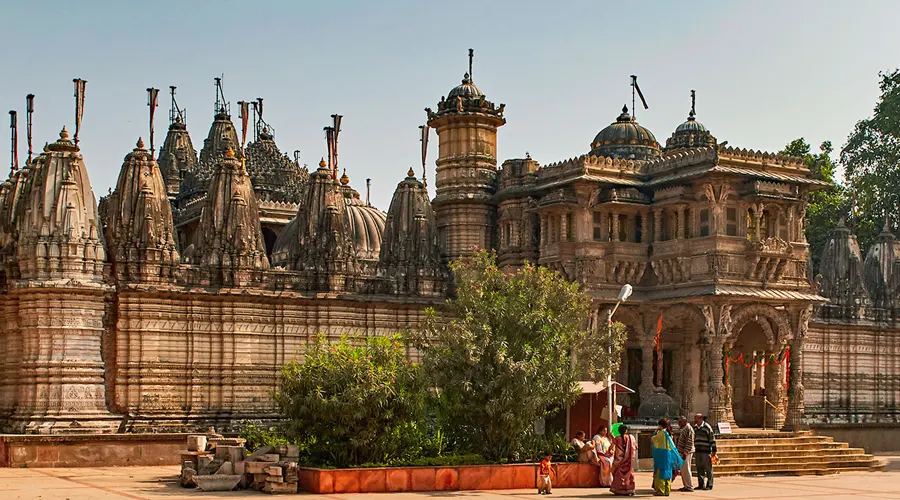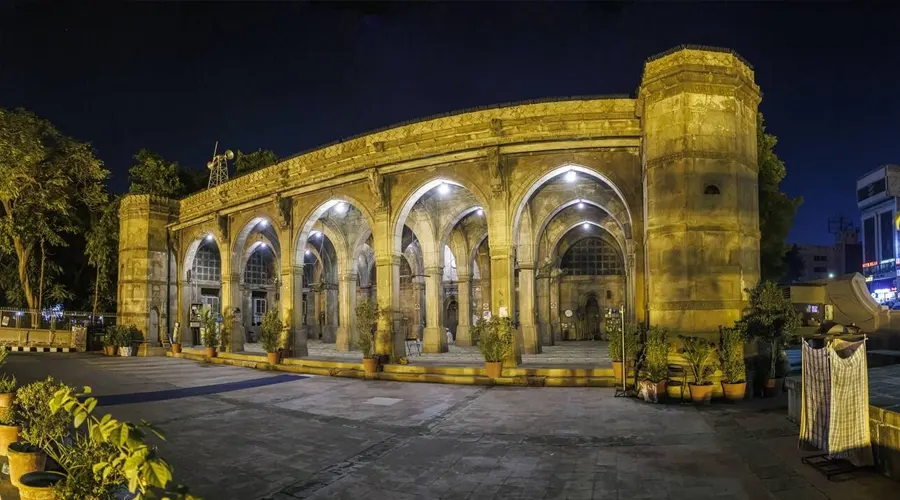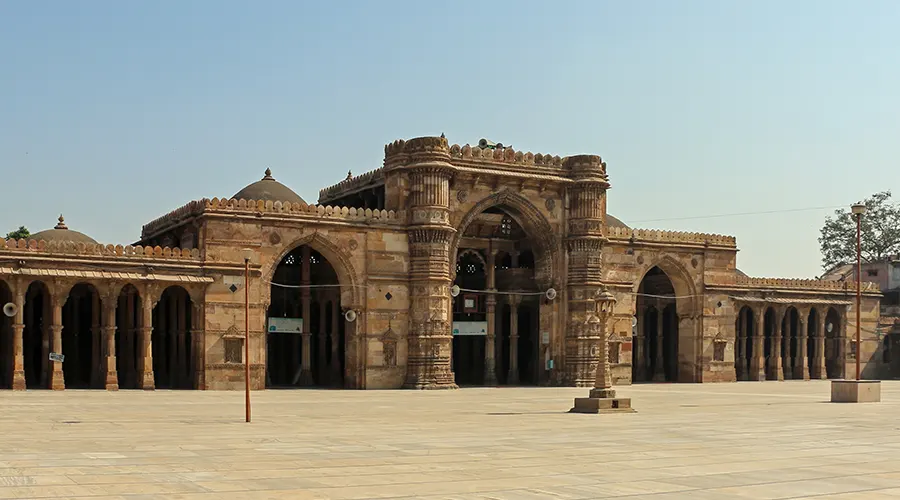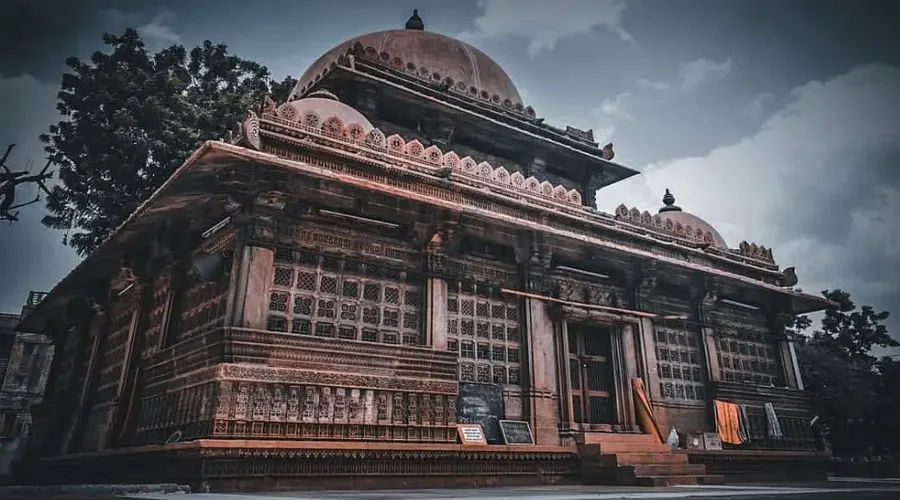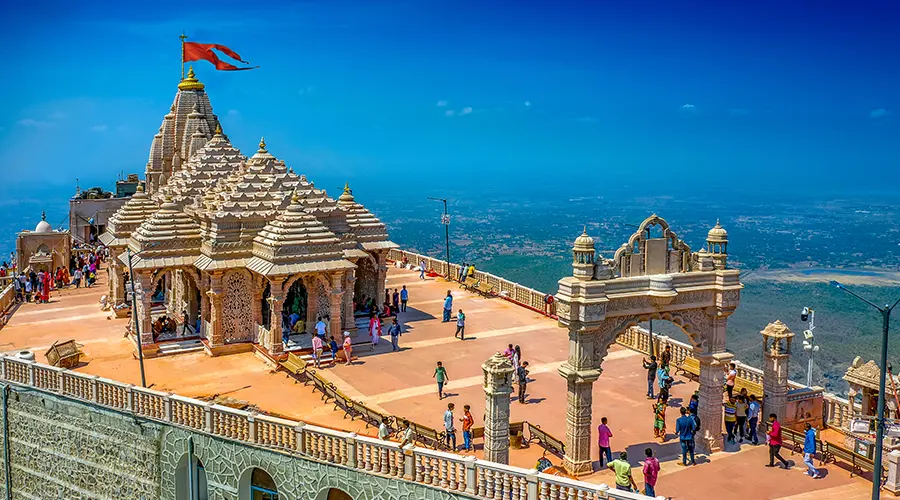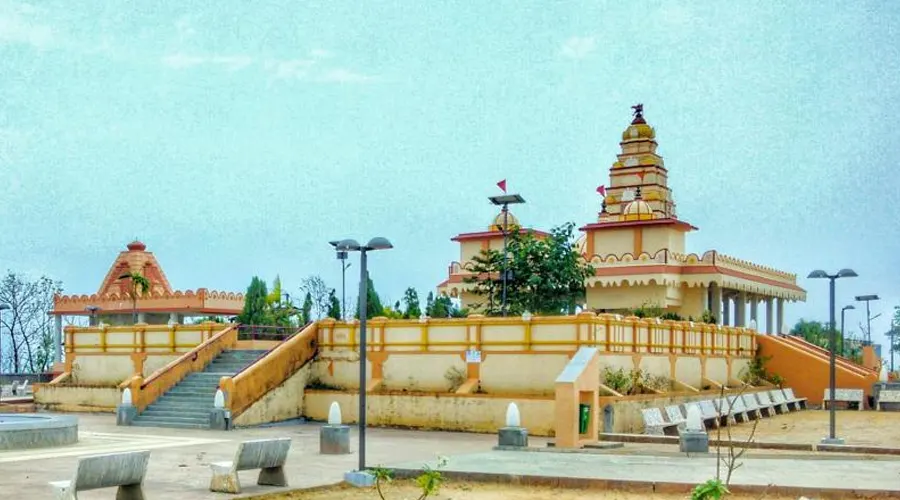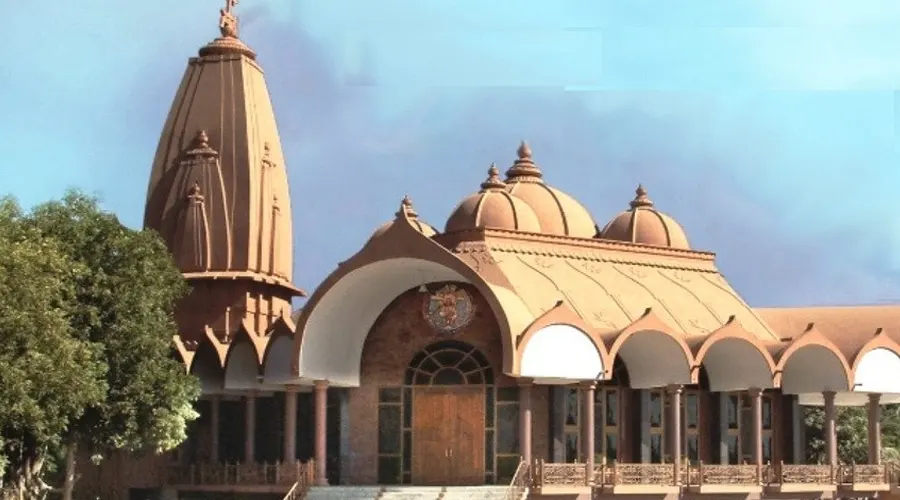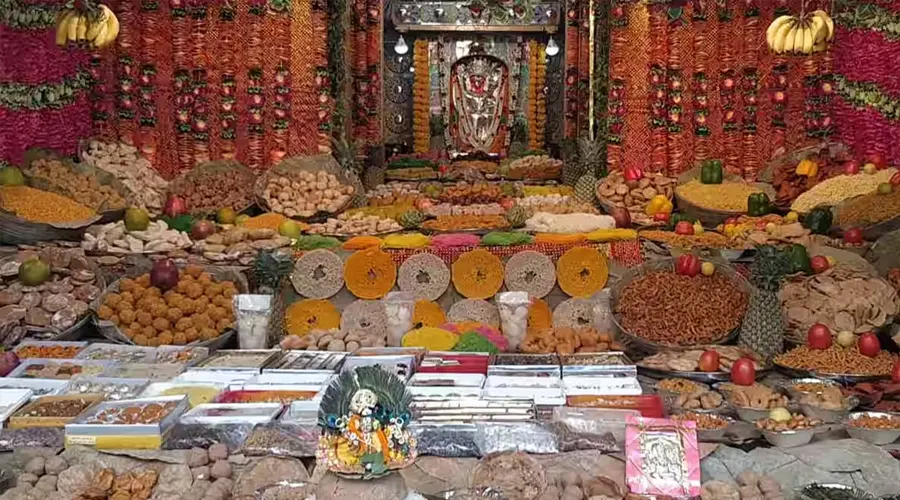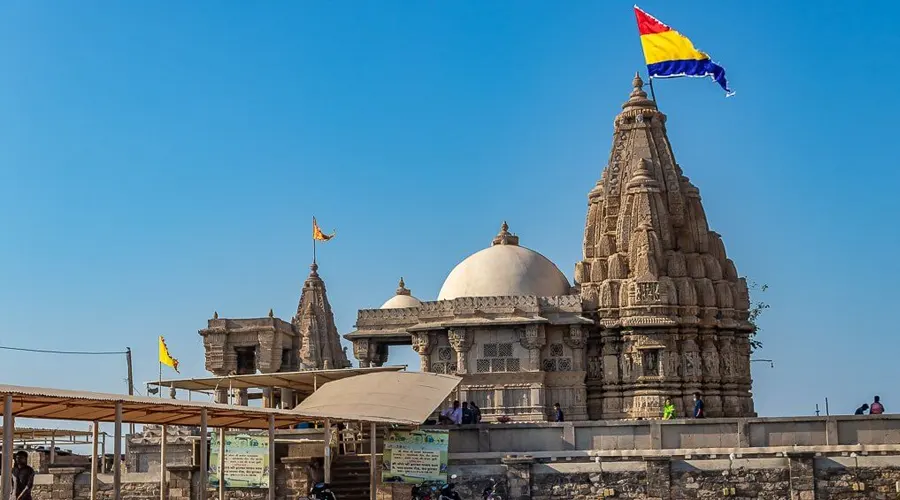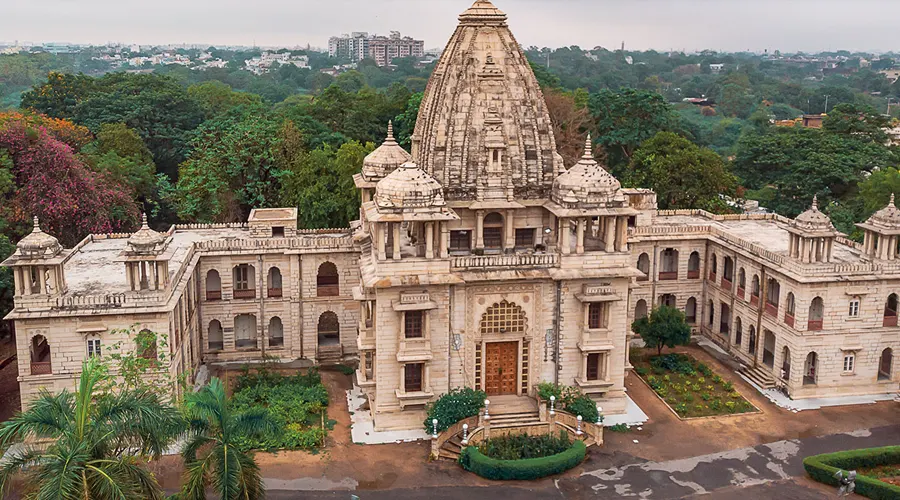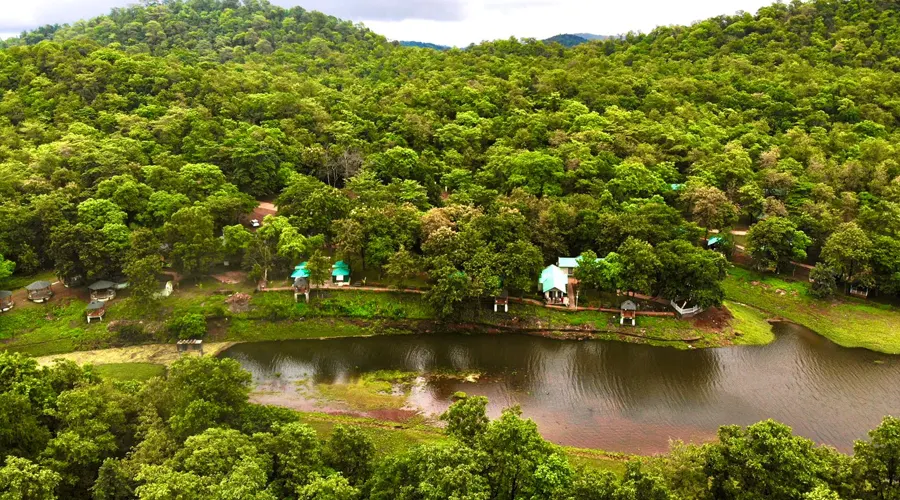Swaminarayan Akshardham Temple Gujarat
'Akshardham' literally means the divine abode of God. It is an eternal place for one to offer devotion and experience everlasting peace. Swaminarayan Akshardham at Gandhinagar is a mandir – a Hindu house of worship, a dwelling place for God, and a spiritual and cultural campus dedicated to devotion, education, and unification. Timeless devotional messages and vibrant Hindu traditions are echoed in its art and architecture. The mandir is a humble tribute to Bhagwan Swaminarayan (1781- 1830) and the avatars, devas, and sages of Hinduism.
The impressive and well-known sacred site, Akshardham Temple is located in Gandhinagar. It features the architectural skills of more than 900 artisans. Tourists from different parts of the country visit the place to explore the unrivaled beauty of the famed temple.
Noted for its architectural charm, the Akshardham temple illustrates the Swaminarayan Sect’s deep-rooted influence on Gujarat’s culture. The unrivaled beauty of the temple allures its visitors with its architectural grandeur, imposing exhibition halls, and well-maintained garden. It is said that whenever Lord Swaminarayan takes birth on earth he would bring with him, his Akshardham.
History of Akshardham Temple, Gujarat
The term Akshardham means the divine abode of God and as the name specifies, the Akshardham temple of Gandhinagar was built in honor of Swaminarayan by BAPS Swaminarayan Sanstha. Inspired by the fourth successor of Swaminarayan, Yogiji Maharaj, and created by Pramukh Swami, the temple was built in honor of Swaminarayan.
Yogiji Maharaj along with Pramukh Swamiji Maharaj had been the backbone of the progress of BAPS. The classical piece of architecture dating back to the fifteenth century also houses the idol of revered Gunatitanand Swami and Gopalanand Swami.
Gunatitanand Swami was a great sage who had been more popular than Akshar Brahm. Legends state that he had divine vision or Divya Drishti through which he had seen Swaminarayan in his childhood.
An influential speaker, Gunatitanand served as a Mahant or the head of the Swaminarayan temple in Junagadh for forty years. He played a crucial role in spreading Swaminarayan’s teachings to the common man and was referred to as the first spiritual successor of Swaminarayan.
Gopalanand Swami was a Paramhansa of Swaminarayan Sampraday who had spent most of his time in Vadodara spreading the teachings of Swaminarayan. He was known for his excellence in all the eight stages of Yoga.
Architecture of Akshardham Temple, Gujarat
An architectural masterpiece is meticulously carved from 6000 metric tons of pink sandstone from Rajasthan. A glorious temple features an amazing seven-foot-tall statue of Swaminarayan weighing around 1.2 tons and set on a three-foot pedestal in the central hall.
Swaminarayan appears in the sitting position with his right hand raised as a gesture of fearlessness called Abhay Mudra, bequeathing protection from evil and dispelling fear from the minds of his devotees. Statues of Swaminarayan’s ardent devotees Aksharbrahma Gunatitanand Swami and Aksharmukta Gopalanand Swami are located on both sides of Swaminarayan’s idol or murti.
A sacred complex that rises to a height of 108 feet and extends to 131 feet in width and 240 feet in length represents the amazing architectural skills of the artisans. Corners of the temple are studded with several statues of the successors of Swaminarayan. The Mandir enthralls its visitors with its awe-inspiring architecture and intricate details.
An interesting feature of the temple is that no steel has been used in its construction. A magnificent sacred complex that stands on seven sculpted pillars and is supported with 210 single-piece stone beams exudes admiration.
Swaminarayan’s Footprints
At the entrance of the temple are Swaminarayan’s footprints made of marble with 16 sacred signs of God.
Temple (Mandir)
An amazing temple adorned with around 200 idols draws the attention of all the visitors. The sanctum sanctorum or the Garbhagriha also holds the images of other successors of Swaminarayan named Bhagatji Maharaj, Shastriji Maharaj, Yogiji Maharaj, Pramukh Swami Maharaj, and Mahant Swami Maharaj.
The central hall of the temple called the Hari Mandapam is adorned with the gold-plated idol of Swaminarayan in the centre. Devotees would be enthralled with the serene ambiance of the hall.
This temple also features the idols of the deities Lord Krishna and his consort Radha, and Lord Vishnu with Goddess Laxmi. Devotees would be mesmerized by the images of Lord Rama featured along with his consort Goddess Sita and their ardent devotee Lord Hanuman. People also worship Lord Shiva who is present with his consort Goddess Parvati and his son Lord Ganesha.
Shrines honoring the deities themselves are amazingly wonderful and hold the deities in colorful dress and amazing ornamentation.
Mandapams
Mandir has two sections where the first floor called Vibhuti Mandapam holds the lotus-shaped displays narrating the character of Swaminarayan. Prasadi Mandapam situated in the basement exhibits an immense collection of the various relics from Swaminarayan’s life.
Traverse through the Hall of garments and gaze at the amazing collection of the attire used by Swaminarayan. Hall of Travels displays the items used by Swaminarayan during his travel to various parts of the country including his sandals and a bullock cart.
Hall of Festivals showcases the items used by him during the celebration of various festivals. The Hall of Holy Remains holds the collection of the holy leader’s hair, teeth, nails, and ashes.
Visitors would be captivated by the statue of Swaminarayan writing a letter that displays one of the original letters written by him.
Abhishek Mandapam is a significant mandapam where the abhishekam of Neelkanth Varni is performed. Abhishekam is an important Hindu ritual where the deity is bathed with water and other specific items while chanting the religious Shlokas or prayers. The idol of Neelkanth Varni was consecrated by Pramukh Swamiji Maharaj, a spiritual leader of BAPS Swaminarayan Sanstha in 2014.
After its inauguration on December 14 by the successor of Pramukh Swami Maharaj, Mahant Swami Maharaj, visitors get an opportunity to do Abhishekam of the holy idol while the Sanskrit Shlokas are being recited. Devotees pray for the well-being of their family members as they perform the ritual.
Exhibition Halls
Five exhibition halls located within the premises of the sacred complex throw light on Swaminarayan’s life and on important features and principles of Hinduism. A splendid way of depicting the important aspects of Swaminarayan’s life through light and sound shows, animatronics figures, scenic representations, short videos, and 3D dioramas is a must-visit.
Neelkanth and Sahajanand Halls of Values
Neelkanth and Sahajanand Halls of Values throw light on the teachings, life, and work of Swaminarayan through multimedia technologies. Learn about Hindu culture through exciting projections, 3-D dioramas, and audio-animatronic figures.
Step back into history as you gaze at the miniature model of the Uttar Pradesh village, Chhapiya where the divine soul, Swaminarayan was born. Visitors can have a close view of the old wells, lakes, and trees where he had spent most of his time within the impressive village.
Sundarvan gives you a glimpse of the Himalayas, jungles of Assam, and the coastal regions of Southern India where Swaminarayan had been roaming as Neelkanth Varni in search of spiritual enlightenment. An audio-animatronics show portrays the ceremony of establishing Swaminarayan as Guru and the spiritual head of the Swaminarayan Sampraday.
The Hall of Paramahansa was built to pay homage to the five hundred spiritual leaders Swaminarayan had appointed to spread his teachings. Gold-plated idols of these Parmahansas stand facing the amazing idol of Swaminarayan. Catch a glimpse of the temple models built by Swaminarayan.
Mystic India Hall
Mystic India Hall houses an IMAX theatre that showcases a 40-minute movie called Mystic India. An inspiring movie directed by Keith Melton and narrated by Peter O’Toole illustrates the spiritual voyage taken by Swaminarayan for seven years when he was known as Neelkanth Varni. It was filmed at 108 locations in the country featuring around 45000 artists.
Financed and produced by BAPS Charities, the movie won the Audience’s Choice Award at the 10th International Large Format Film Festival at La Geode in Paris and the Most Popular Film at the San Jose IMAX Film Festival.
Mystic India beautifully highlights the journey he had taken at the young age of eleven years after the death of his parents for spiritual exploration. He had walked around 12000 km starting from the Himalayas to the southern tip of India. The movie also showcases the architectural sites of the country including Ratha Yatra of Jagannath Puri and the Rameshwaram temple.
Premanand Hall
Premanand Hall has three sections one section that throws light on the Hindu scriptural texts, Mahabharata, Ramayana, and Upanishads. Mahabharata and Ramayana are Sanskrit epics of ancient India. Look at the dioramas and the paintings that illustrate the key messages of the holy texts of Mahabharata and Ramayana.
Dioramas depict scenes from the sacred text of Mahabharata and Bhagavad Gita. Upanishads are sacred scriptures written in India somewhere around 800 and 500 BC that focus on the realization of Atma or the soul and the Paramatma or the God.
The second section named the Hall of Harmony displays images of symbols, scriptures, sacred sites, moral codes, and prayers of the world’s major faiths. While there are different religions and faiths they all convey the same message of universal harmony.
The last section of the Premanand Halls pays tribute to the country’s most famous poets. Feel divinity as you listen to the spiritual songs.
Sant Param Hitkari Hall
Sant Param Hitkari Hall features an audio-animatronics show that conveys the message of how to attain happiness. Move back to the 19th century when Swaminarayan attended the assembly with great saints. A fifteen minutes animated show throws light on Swaminarayan’s life and his path of dharma.
Sachitanand Light show
Portraying the story of a small child Nachiketa, the spectacular light show is a major draw of the renowned place. A lively show that combines the power of fireballs, fountain animations, multicolor lasers, 80-foot wide and 60-foot-high water screen projections, and music is an enriching experience.
The show which runs for 45 minutes focuses on a story from Kathopanishad presented in an open amphitheatre with live actors.
Nachiketa was the son of a sage Udalak who performed a yaga offering all his processions to attain spiritual bliss. Rather than offering valuable things he offered sick cows and unused properties. Nachiketa obstructed his father’s act and asked his father as to whom he was going to offer Nachiketa. In a rage, his father offered him to the god of death, Yama.
The small nine-year-old boy Nachiketa went to Lord Yama and waited for him at his door for three days without food and water. Lord Yama tried to scare him through different modes but Nachiketa remained unmoved. Pleased with the patience and courage of the young boy, Lord Yama offered him to choose any three boons.
As a simple young boy, he asked Lord Yama to grant his father a peaceful mind and the knowledge of Yagna. He finally asks Yama to tell him the truth of what happens after death. Lord Yama said that Nachiketa could better ask for material wishes rather than trying to know about life’s truth at a very small age.
Further events give an introduction to Truth, Consciousness, and Bliss which is termed Sat-Chit-Anand. Watching the amazing story through the light show is going to be an enchanting experience.
Show: After Sunset
(Currently 7:30 pm)
Sahajanand Van
Sahajanand Van is a captivating garden spread over an area of 15 acres of land that houses amazing attractions including a fountain, rock sculptures, a waterfall, and a nursery spread over 18000 sq feet of land. Noteworthy features include six cultural wisdom spots portraying principles of Hinduism. A stunning and wonderful garden is a habitat of 57000 trees, shrubs, and plants.
Scrupulously carved marble sculpture of Swaminarayan on his mare, Manki catches the attention of the visitors. Swaminarayan used to visit various villages riding on Manki. The idol of Lord Vishnu on his serpent, Shesha along with Goddess Lakshmi on his side is another notable sculpture.
Sun Chariot called Surya Ratha drawn by the seven stallions is a key attraction. Moon God is worshipped in the Hindu religion for offering life and light in the darkness. Honouring him, the Moon Chariot has been built being drawn by ten antelopes.
Another draw is the sculpture featuring Samudra Manthan where the heavenly gods and the demons fought to obtain the amrut or the precious nectar.
Visitors can watch for the sculpture featuring a lady with a veena and a pot sitting on a rock from which pours in the water representing the holy rivers of India namely, Ganga, Yamuna, Sutlej, Narmada, and Saraswati.

